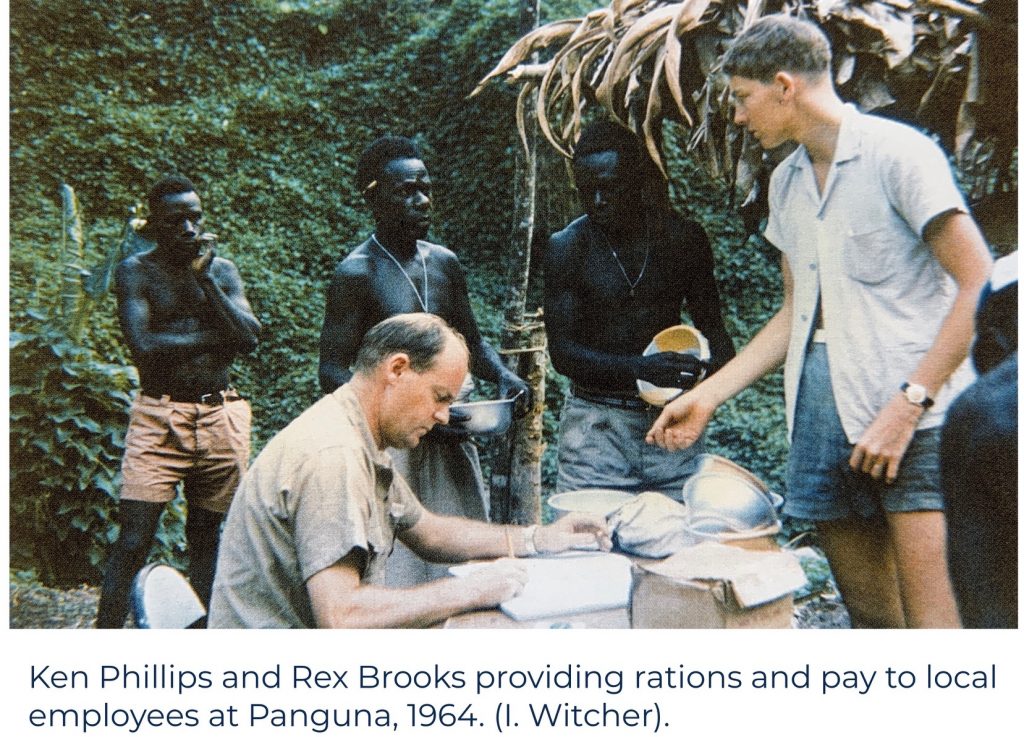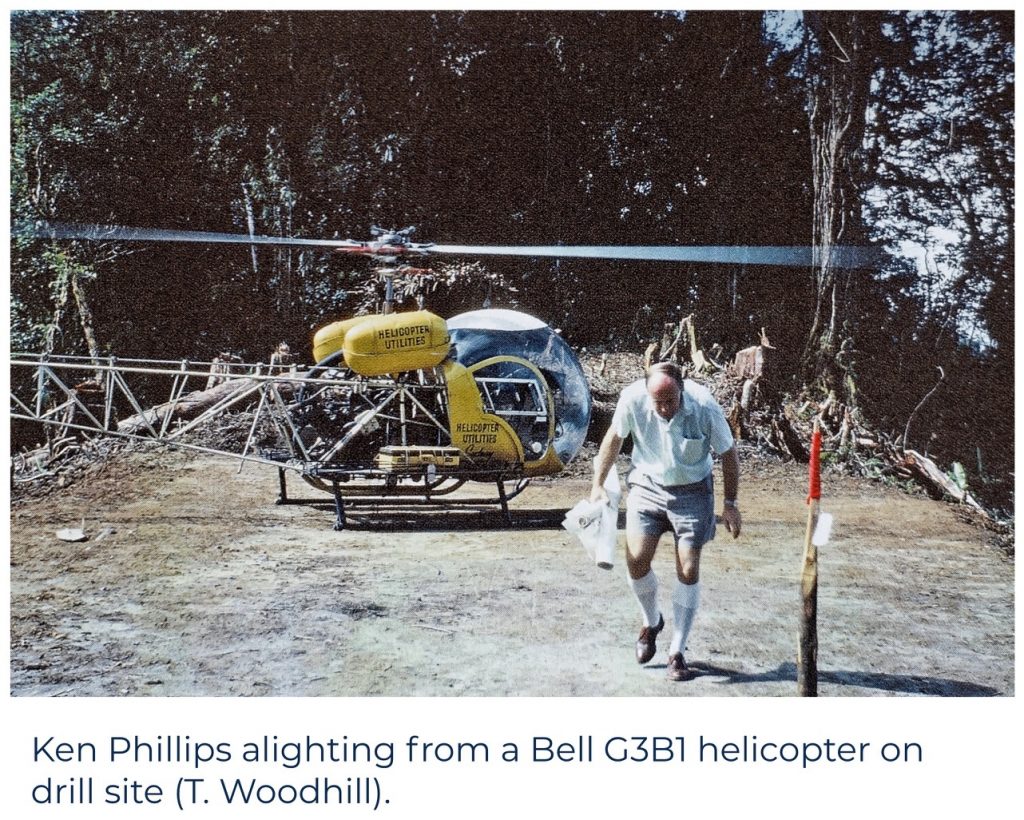AIG regrets to inform members of the passing of prominent exploration geologist and industry leader, Ken Phillips.
Ken was a living legend in many ways: geologist, executive, mentor, boss, husband, father, friend and gentleman with a quick wit and dry sense of humour to boot. He had a strong and steadfast moral compass, uncompromising principles, and a determination and unwavering commitment to his ‘team’ – traits which allowed him to achieve great success as an exploration geologist, project manager and then as a company executive later in life. It can be said that Ken had at least two “Eureka!” moments in his life, which bookend his professional career; firstly as a young geologist in the jungles of Bougainville in 1964 and secondly as a mining executive when his company was subject to a US$1.1BN takeover/merger in 2007, after which Ken gracefully entered into a much-deserved retirement.Ken is recognised as the discoverer of the Panguna copper deposit on Bougainville Island in 1964 while working for CRA Exploration (CRAE). At the time and subsequent to the mine opening in 1972, it was and still is one of the largest porphyry copper deposits in the world and it provided some 40% of PNG’s GDP whilst in operation. The mine was closed prematurely in 1989 following civil unrest on the island.

Ken’s vision and determination led to the discovery of Panguna. In 1961 he was appointed project leader of a team within CRAE that was experimenting with the new geochemical technique of stream sediment sampling and assaying with atomic absorption spectrometry (AAS) with the aim of looking for porphyry copper deposits in eastern Queensland. While on holiday in southeast Asia in 1963, Ken visited the Atlas porphyry copper mine on Cebu Island in the Philippines. It was a combination of these experiences and gifted foresight that Ken was able to recognise what Panguna was when he and his team walked into the area in April 1964. Their aim was to investigate some old gold workings that dated to the 1930s, conduct stream sediment and soil geochemical sampling programs to see if the techniques worked in tropical environments and answer the fundamental question…could there be a porphyry copper deposit in the mountain range (Crown Prince Range)? In short, the mineralisation that Ken saw in the banks of Panguna Creek reminded him of what he had seen at the Atlas mine on Cebu Island. It was his first “Eureka!” moment. As a footnote, by the end of August 1964, stream sediment and soil sampling programs had identified a four square km anomalous zone representing the footprint of the Panguna copper porphyry deposit. Success all round.

Ken resigned from CRAE in 1967 and was subsequently recruited as Project Manager for the Ok Tedi copper project in June 1969, with a remit of defining a mineable resource by the end of 1970. The Ok Tedi porphyry copper deposit is in the highlands of PNG, near the border with Indonesia and had been discovered by Kennecott Copper Corp geologists in 1968 using stream sediment geochemical sampling methods.
For the next 18 months up to late 1970, Ken provided the leadership, direction and focus the project needed and was able to define a major copper project for Kennecott.
Throughout what was a very busy time, Ken somehow found the time to meet and marry Pauline in Perth mid-September 1969. Ken and Pauline remained happily married until his passing and have two sons, namely Cameron and Tom.
Following his stint at Ok Tedi, Ken went on to run a number of mining projects for large companies throughout the Pacific Rim.
Ken’s next big success story is as an executive and begins with his partnership with Norm Seckold, a serial and highly successful, mining entrepreneur based in Sydney. Norm and Ken had teamed up prior to starting Bolnisi Gold NL, a small company at the time with mining assets in the Republic of Georgia (FSU), in the mid-1990s. However, it was following a visit to the Madneuli porphyry copper mine and surrounds in southern Georgia that Ken described the prospectivity of the area as being like a “Garden of Eden”. Bolnisi Gold was subsequently formed and named after a town nearby, and the company went on to successfully build a gold mining operation, treating gold-rich “waste dumps”. The waste dumps had been neatly and systematically stockpiled based on gold grade, by the operators of the copper mine that started in 1975.
In the early 2000s Bolnisi ventured into Mexico by purchasing the historic, silver-rich Palmarejo mine in Chihuahua state. For the next [three] years Ken and his team drilled, expanded the reserves and began developing the mine ahead of a US$1.1BN takeover by Coeur d’Alene in mid-2007. This was Ken’s second “Eureka!” moment and a fitting end to a long and highly successful career as geologist, executive, mentor, boss, husband, father, friend and gentleman.
A legend.
Scott Marsh